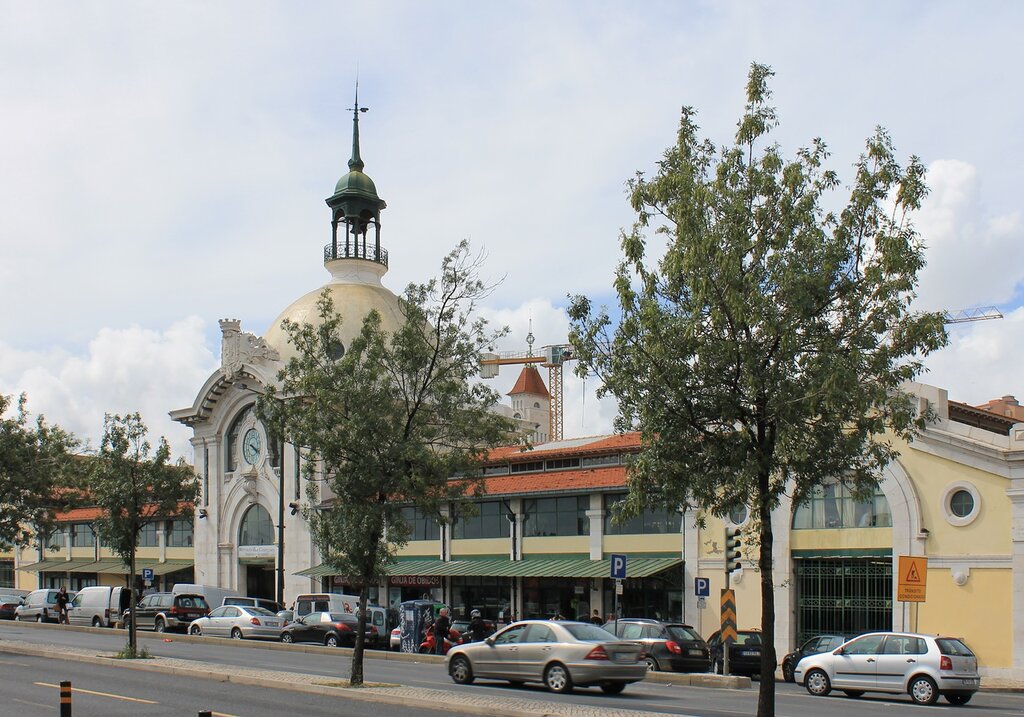Cais do Sodré station and the Ribeira market
Below the Bika area, on the Tagus, is the very small Cais do Sodré area (Cais do Sodré on the map), famous for the train station of the same name. A transport hub that includes a commuter train station, metro, and ferry terminal.

The train station (Estação Ferroviária do Cais do Sodré) offers trains to the Atlantic coast, from here you can drive to popular resorts Cascais and Estoril, in the same direction is Cape ROCA, the Western tip of Europe.

The Alcantara Mar-Cascais line was opened on December 6, 1890, and the section to Caix do Sodre was commissioned on September 4, 1895. At first it was just a platform, then, in 1902, a small pavilion was built. .

The station received its current appearance in the late twenties of the last century, as part of the reconstruction of the railway line, which began in 1926. The art Nouveau building designed by Porfírio Pardal Monteiro was opened on August 18, 1928.

On November 7, 2012, the station received the status of a monument of public importance (Monumento de Interesse Público).

Станция печально известна тем, что 28 мая 1963
года здесь произошло обрушение крыши, в результате которого погибло
более 49 человек и 40 получили ранения. Следует отметить, что катастрофа
произошла не в памятнике архитектуры, а в пристрое, который был
сооружен в пятидесятых годах. Сейчас кровлю поддерживают не слишком
эстетичные, но надежные стальные фермы.

Next to the train station is the Transtejo terminal (Estação Fluvial do Cais do Sodré), from which high-speed passenger ships and ferries depart to Montijo, Casillas, Seixala.

Opposite the station, you can see the Ribeira market (Mercado da Ribeira on the map). The building, constructed mainly of metal in the Moorish style, was opened to the public on January 1, 1882. In 1897, a fire destroyed most of the market and it was significantly rebuilt. Only the Central entrance with the dome remains of the old building.

The Lisbon tram is a symbol of the city. This is not a Museum of historical carriages for tourists, and a regular Shuttle bus. Many trams were made at the beginning of the last century, but they are not going to retire - they have not yet come up with alternatives for moving along the narrow and steep streets of the old quarters. Besides, it is impossible to imagine Lisbon without these cute yellow trailers. On the new long lines of the flat part of the city, of course, modern comfortable cars are used.
